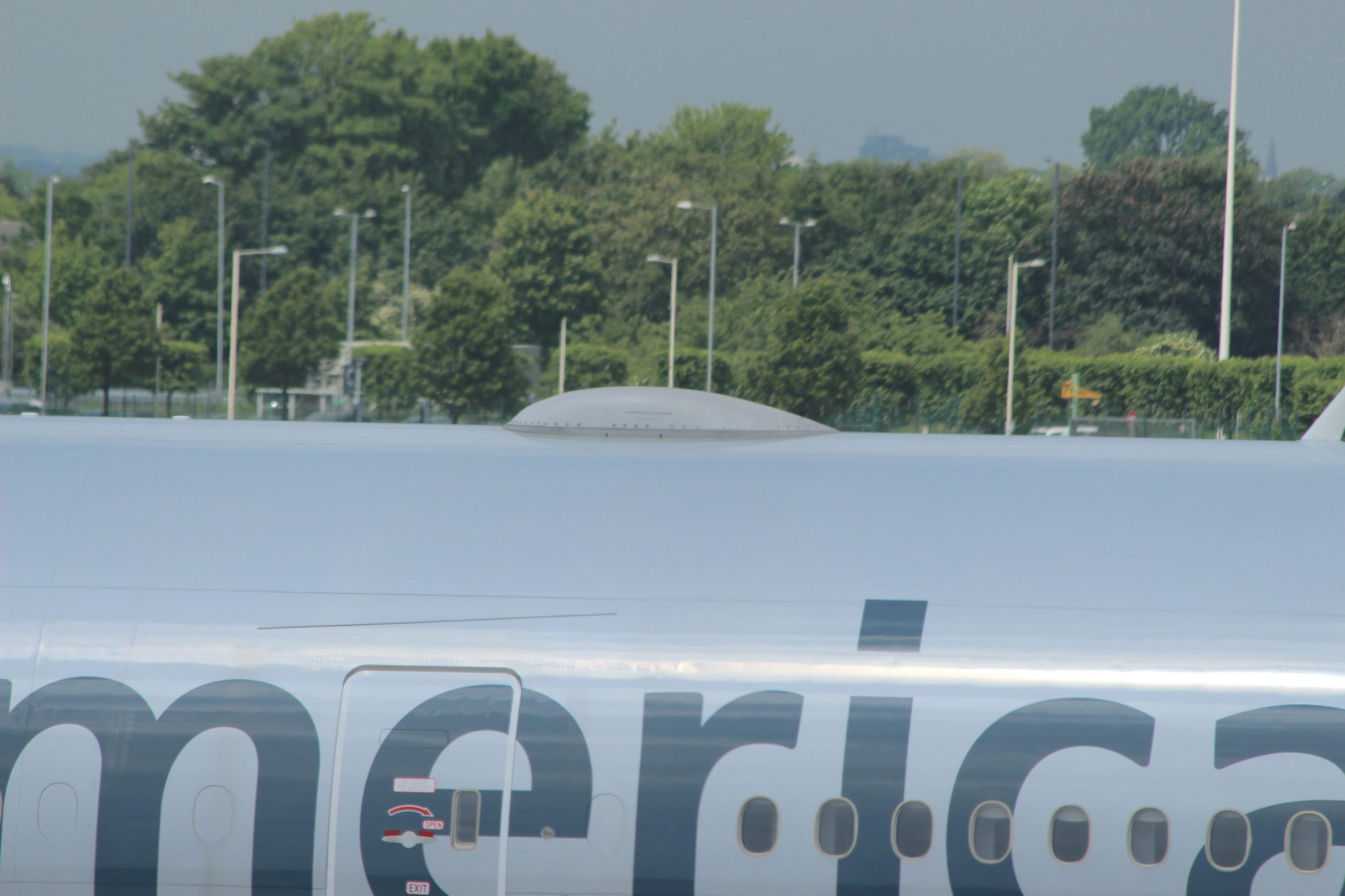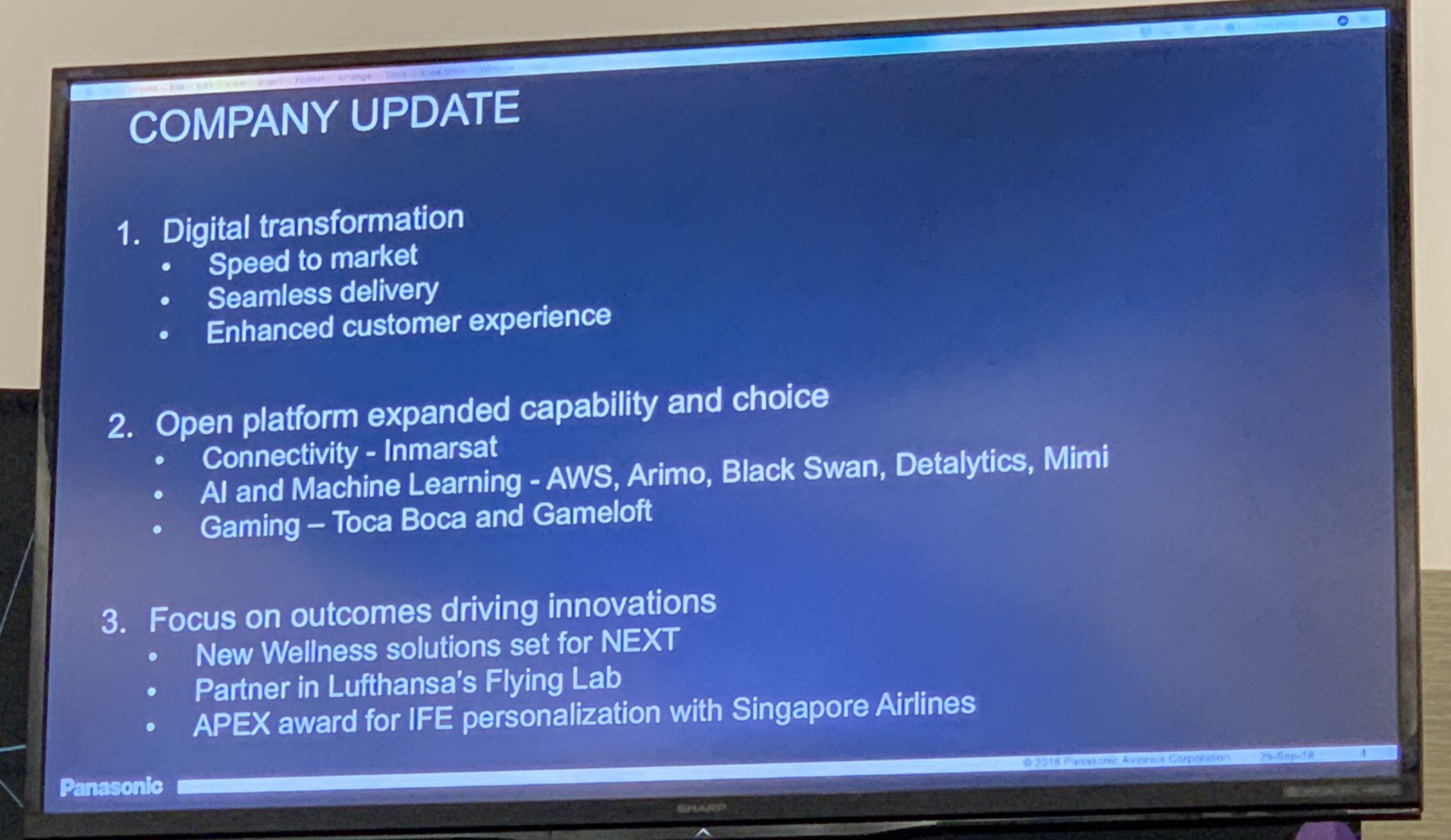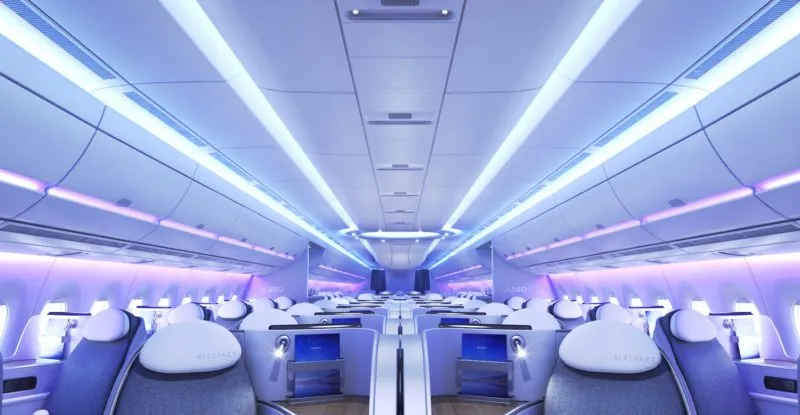The aviation applications of the Internet of Things are continuing to develop, but one need being clearly identified by major players in the passenger experience space is that of integrator: the part of the system that provides the backbone and, to an extent, the processing, for the huge amount of data being generated by the IoT on board aircraft.
Both Airbus and Panasonic talked openly with Runway Girl Network about their aspirations at the recent APEX EXPO in Boston, with both coming from different angles.
Airbus vice president cabin marketing Ingo Wuggetzer outlined the way the airframer was starting to think before the door’s opened to the exhibition, and elaborated during a wrap-up interview at the end of the week that Airbus is still very much in listening mode.
“We need to understand from airlines what they want to collect, what they’ll tell us they are interested in, and somebody needs then to bring that together. We see us as in a natural position as we are the integrator and the architect for the hardware and we should be the same thing as a standard for the aircraft,” Wuggetzer suggested as the show closed, noting that Airbus is still open as to the precise business model it might use.
Suggesting that standards-setting may be a key part of the role, especially around operational wireless networks, Wuggetzer said that “makes life, I think for everybody, easier — we do not really predict to own the data itself. We want to enable a service that is enriching the airline experience.”
The trend at airframers is largely around bringing work back in-house that had previously been done by integrators, especially as those companies are growing via the recent round of mergers and acquisitions.
Airbus’ Wuggetzer didn’t see the airframer’s interest in integration work as a wider play to side step the growing importance of these super-integrators and super-suppliers, but rather talked of speeding up the learning curve “in terms of quality, of maintenance, of costs, of effects”.
Airbus’ data platform Skywise, for which it partners with controversial US data analytics firm Palantir, is seeing remarkable success in the market, with Delta Air Lines recently signing on to be a Skywise partner, and Airbus further releasing a fleet data application, Skywise Reliability, as part of its core suite.
Panasonic Avionics, meanwhile, is keen to leverage its domination of the inflight entertainment space, and the backbone that it has: on board existing eX-series IFE installations, via its inflight connectivity solution, and with the new generation NEXT system.
“There are lots of people trying to do this,” notes David Bartlett — who serves as Chief Technology Officer, Chief Information Officer, and Chief Information Security Officer — citing “Panasonic’s presence in the majority of airlines giving us access to data that’s statistically significantly representing what the airlines need to address.”

Panasonic suggests that its work in IFC and IFE puts it in a good place to integrate the IoT throughout the aircraft. Image: John Walton
But with embedded seatback challenges to Panasonic’s position from both Zodiac Aerospace’s RAVE system, from a revitalised Thales, as well as trends on airlines such as American Airlines and United away from seatback on narrowbodies — as well as the low-cost airline model where inflight entertainment on narrowbodies remains rare — how will Panasonic penetrate markets where it does not have a presence?
“However we’re playing with it on the plane, if it’s not through the IFE system, if it’s providing wifi or connectivity or the maintenance service, each one of those is a data point that we can go off from and we can work with them on,” Bartlett says.
“It’s a heavy lift. It’s easy to use some of the cloud thing, but to really do it properly at a global scale it’s tough,” Bartlett notes. “We’ve got enough resource investment to open up this center of excellence in Silicon Valley and hire the best talent, people who have done this before, so we’re able to build it and scale it very quickly, and connect all the artificial intelligence and machine learning constructs to leverage it quickly.”
Part of the key for Panasonic will be to translate its buzzwords and jargon — “edge cloud”, “data lake”, and so on — into understandable real-world concepts and product offerings. Executives acknowledged that it was not always successful in doing so, even to audiences with a firm grasp of the subject matter, at this year’s EXPO.

Panasonic is doing some interesting work with interesting partners, but a key next step is to codify the benefits. Image: John Walton, slide: Panasonic
The company’s strategy, says SVP, network operations Ian Dawkins, “enables the services we’ve spoken about, the infrastructure from NEXT online, et cetera: it’s not one piece. What we want to do is explain it simply, and then we can go through and talk about how it’s really coming together.”
But one common thread between both Airbus and Panasonic was working in partnership with data analytics companies — Skywise for Airbus, Black Swan for Panasonic — to gain a further layer of understanding.
“We’re doing some strategic collaboration with our partners at Black Swan to do a lot of social prediction, a lot of social mining for insights as well,” says Julie Lichty, executive director, digital solutions and services at Panasonic Avionics.
“That would be layered into some of the analytics that we’re talking about and the data lake construct that David [Bartlett]’s team is putting together, to give us a lot more insight into what the passengers are thinking and being very specific about how we do product development, so that we can be a lot more meaningful in this space than we have been in the past.”
Related Articles:
- Astronics offers battery fire detection, cabin management bin sensors
- Airbus initiative aims at integrator role for IoT on board
- Airbus, Palantir unveil Skywise IoT data platform for aviation
- VIDEO: Panasonic Avionics CTO talks what’s next for NEXT
- Aviation companies join forces to “smarten up” the aircraft cabin
- The IoT of of inflight retail is coming, just not at lightning speed
- New servers promise intelligent data crunching for IoT of aviation
- From IoT pilots to AI platforms, Emirates talks tech evolution
- Podcast 041: Diving into big data as IoT of aviation takes flight
- Press Release: Panasonic and gategroup form strategic alliance
- Podcast Episode 025: Passenger Personalization and Data Rationalization
- The Internet of Things, coming soon to an airline near you
- Internet of Everything presents dichotomy of PaxEx implications











